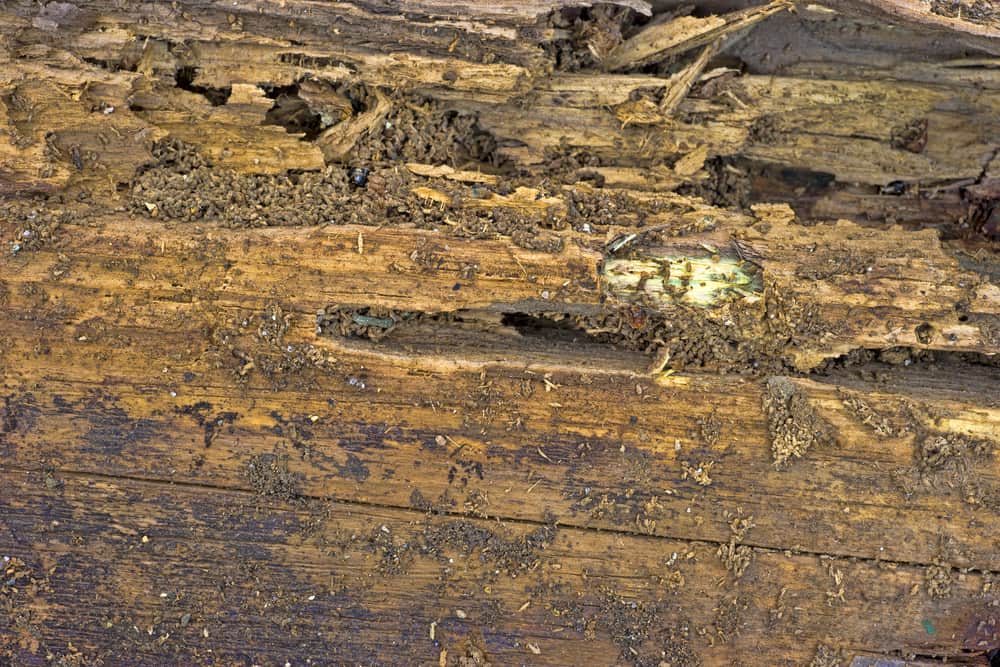
There are thousands of species of ants in the world, and a handful can be found inside your home. Fortunately, most of them do not cause any damage. However, carpenter ants are a notable exception. As their name implies, these ants have an affinity for wood, and if they find their way into your house, they can cause structural damage to the interior and exterior of your home.
WHAT DO CARPENTER ANTS LOOK LIKE?
Of course, if you’re going to prevent a carpenter ant infestation, you need to know what to look out for. Carpenter ants can vary greatly in appearance, but generally speaking, they range in size from five-eighths of an inch to one inch in length and may be found in shades of black, brown and red. Two common types found in homes are black.
Reproductive carpenter ants, known as swarmers, have wings and may be seen flying around as they seek to establish new colonies.
WHERE CAN YOU FIND THEM?
In their natural habitat, carpenter ants seek out moist locations to nest, frequently in decaying wood like dead tree limbs, stumps, tree holes or landscape timbers.
Carpenter ants in homes are most likely from satellite colonies. A parent colony may be a football field’s length, or further, away. Typically, they will be found in moist areas around windows and doorways, as well as bathrooms, kitchens, pipes, drains and roof vents. Crawl spaces or attics that are consistently damp or have water leaks may also attract ants. Like other ant species, carpenter ants will eat virtually anything, including other insects, so it can be easy for them to wander into your home while they’re foraging for food. They like protein, fats and sugars, and any number of kitchen spills, from pet food to sugary substances, can draw them inside.
You may see swarmers in your home during the spring, and while colonies will go dormant in the winter, the ants do not typically die off and can remain active from December through January.
WHAT DO THEY DO?
It’s a common misconception, but carpenter ants don’t actually eat wood. Rather, they excavate wood and form tunnels as they build their nests. Depending on the number of ants and their level of activity, damage can range from minimal to severe.
This affinity for wood has caused carpenter ants, particularly winged carpenter ants, to commonly be confused with termites. However, there are some important differences between the two species. First, termites need cellulose to survive, and they actually eat wood, meaning they can cause much more damage to your home and property. Second, while both insects have wings when swarming, a termite’s wings are uniform in size and a carpenter ant has two large wings and two small wings.
HOW TO HELP GET RID OF CARPENTER ANTS
There are a few steps you can take to help prevent a carpenter ant infestation in your home:
- Store firewood away from your home and remove dead branches and limbs from around your foundation
- Trim dead limbs and remove stumps to eliminate potential nesting sites
- Seal plumbing and roof leaks and check attics and crawl spaces for excess moisture
- Direct water from rain gutters away from your home
- Inside your home, ensure that any leaks or plumbing issues are repaired promptly
- Have any damaged wood repaired immediately
While these tips can help, carpenter ants are notoriously difficult to get rid of. This is primarily due to the fact that effective removal requires the elimination of as many satellite colonies as possible. Remember, these may be inside or outside the home. In the case of the parent colony, it’s most likely outside.
Because of this, it can pay to enlist a pest control professional with the knowledge and experience necessary to help get rid of the problem. If carpenter ants are an issue in your home, contact Terminix® for control recommendations today.




